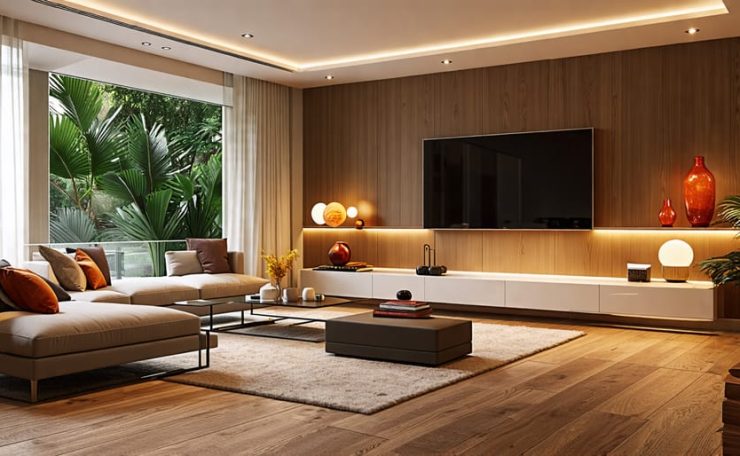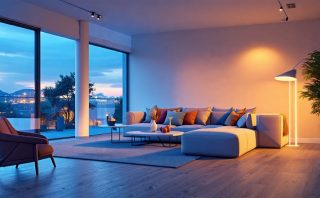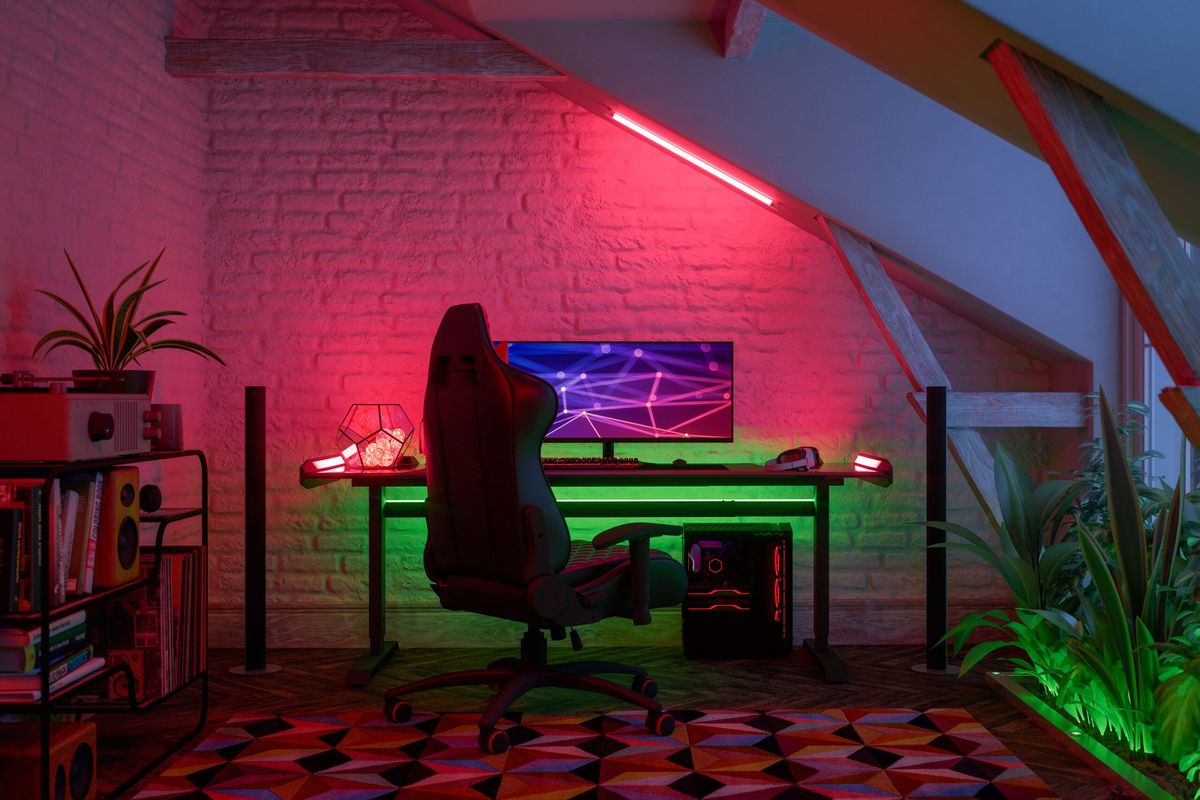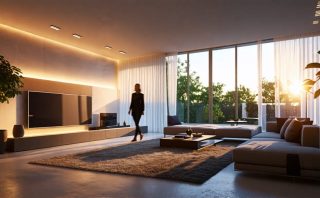Maximize natural light by strategically placing mirrors and choosing light-enhancing colors. Incorporate layered lighting to create depth and flexibility; combine ambient, task, and accent lighting for practical and aesthetic appeal. Select fixtures that align with your overall design style, ensuring they complement and not clash with existing elements. Invest in dimmable options to easily alter the ambiance and adapt spaces for various functions and moods.
Understanding the Role of Lighting in Interior Design
The Impact of Lighting on Mood and Ambiance
Lighting plays a pivotal role in setting the mood and ambiance of any space, influencing how it is perceived emotionally and aesthetically. Warm lighting, with its yellow and orange hues, creates a cozy and inviting atmosphere, making it ideal for living rooms, bedrooms, and spaces intended for relaxation. Alternatively, cool lighting, characterized by its blue and white tones, promotes alertness and concentration, which is beneficial in offices and kitchens. Layered lighting, combining ambient, task, and accent lighting, adds depth to a room and can highlight key design features, creating a dynamic and engaging environment. Dimmable lights offer flexibility, allowing a space to transition smoothly from a vibrant daytime setting to a soft and calming evening ambiance. The strategic placement and selection of light fixtures can transform a functional room into a welcoming sanctuary or an inspiring workspace, proving that thoughtful lighting design is essential for both form and function in interior spaces.
Functional Considerations
Lighting plays a crucial role in interior design by serving various functional purposes tailored to specific environments. In kitchens, task lighting is essential for providing focused illumination on countertops and cooking areas, enhancing both safety and precision during food preparation. Living rooms benefit from layered lighting, combining ambient, task, and accent lights to create a versatile atmosphere that caters to relaxation, reading, or social gatherings. Offices, on the other hand, require bright, even lighting to boost productivity and reduce eye strain, often achieved through a mix of overhead and desk lamps. For those interested in expanding their lighting expertise further, consider exploring the art of lighting up your landscaping to harmonize indoor and outdoor spaces. Understanding these functional considerations ensures that chosen lighting solutions not only elevate the aesthetics of an interior but also enhance its usability, catering to the specific needs of homeowners and professionals alike.
Types of Lighting in Interior Design
Ambient Lighting
Ambient lighting, often referred to as general lighting, serves as the foundational layer of illumination in a room, creating a consistent level of light that ensures visibility across the space. It is designed to provide a backdrop, allowing occupants to move safely and comfortably while highlighting the room’s architectural elements and decor. Ambient lighting can be achieved through various fixtures such as ceiling lights, wall sconces, or indirect lighting solutions that reflect off surfaces to avoid harsh shadows. This type of lighting is essential in establishing the mood of a room, setting the stage for other lighting layers, like task and accent lighting, to perform their roles effectively. For those looking to elevate their spaces, considering smart lighting solutions can offer both functionality and style, with options to adjust brightness and color to suit any occasion. Whether for residential or commercial settings, well-executed ambient lighting forms the backbone of an inviting and cohesive environment.
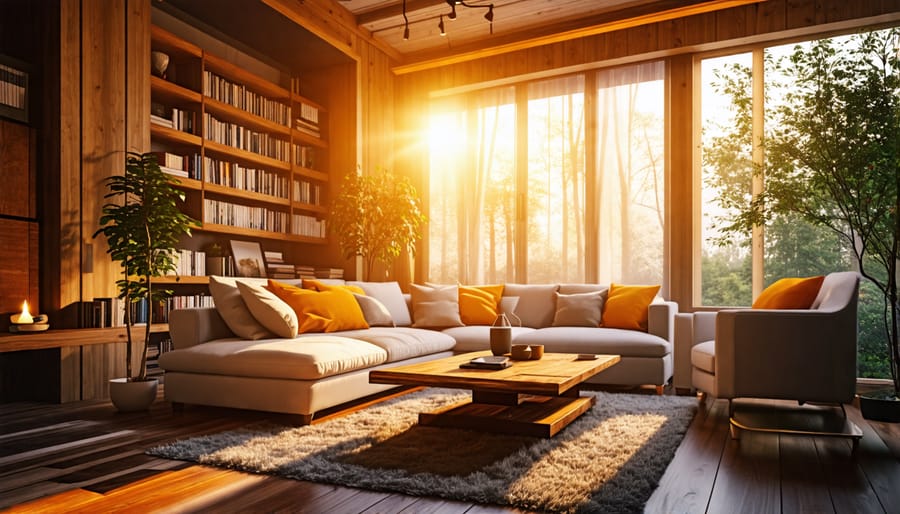
Task Lighting
Task lighting is a critical component of interior design, providing the illumination necessary for performing specific activities with ease and precision. Whether it’s reading in a cozy nook or preparing a meal in the kitchen, task lighting targets these areas to enhance both functionality and comfort. Unlike ambient lighting, which offers general illumination, task lighting focuses on direct light to minimize eye strain and increase efficiency in tasks like writing, sewing, or working on crafts. When selecting task lighting, consider fixtures like desk lamps, under-cabinet lights, or pendant lights, each offering distinct advantages tailored to the specific demands of the space. In addition to practical benefits, thoughtful task lighting can also contribute aesthetically, adding a layer of design sophistication to your interiors.
Accent Lighting
Accent lighting is a transformative element in interior design, used to draw attention to specific areas or features within a space. By focusing light on artwork, architectural details, or unique textures, accent lighting enhances a room’s visual interest and depth. It serves as a practical solution to emphasize design elements without overwhelming the environment. This type of lighting can be achieved through track lights, wall-mounted fixtures, or recessed lights, allowing for a variety of aesthetic applications. In creating balance, it’s essential to integrate accent lighting thoughtfully with ambient and task lighting to complete the overall lighting scheme. When selecting accent fixtures, consider their adjustability and beam angle to ensure they effectively highlight your chosen focal points. Whether in a residential setting or commercial space, accent lighting offers versatile design opportunities to personalize and enhance your environment.
Tips for Choosing the Right Lighting
Matching Lighting with Interior Style
When matching lighting with your interior style, consider both functionality and aesthetics. For modern interiors, streamlined fixtures like recessed lighting or sleek pendant lights enhance the minimalist appeal, while offering optimal illumination. In contrast, traditional styles benefit from classic chandeliers or sconces that add elegance and warmth. When designing industrial spaces, exposed light bulbs and metal finishes create a raw, edgy vibe that complements brick and wood textures. For a coastal style, opt for light fixtures with natural materials like bamboo or driftwood to capture a breezy, relaxed atmosphere. Remember, layered lighting elements such as ambient, task, and accent lighting can adapt to any style, providing depth and flexibility. Personalization is key, so consider a consultation for tailored lighting solutions that align with your design vision. Prioritize the cohesion between lighting and décor to transform your space into a harmonious and functional environment.
Best Practices for Residential Lighting
To optimize residential lighting, consider layering various light sources to enhance functionality and aesthetics. Begin with ambient lighting, the primary source that provides overall illumination to a room. Use ceiling-mounted fixtures or recessed lights for even distribution. Task lighting is essential for activities like cooking or reading, so incorporate reading lamps or under cabinet lighting in kitchens and offices. Accent lighting adds depth and highlights architectural features or artwork—track lights or wall-mounted fixtures work well for this purpose.
Select bulbs based on color temperature; warmer tones create a cozy atmosphere, while cooler lights are suitable for task-oriented spaces. Dimmer switches add versatility, allowing you to adjust intensity depending on the time of day or event. Additionally, smart lighting solutions can be integrated for energy efficiency and convenience. Prioritize energy-efficient options like LED bulbs to reduce energy consumption and improve sustainability. By thoughtfully combining these elements, you can transform any space to meet your practical needs and design vision.
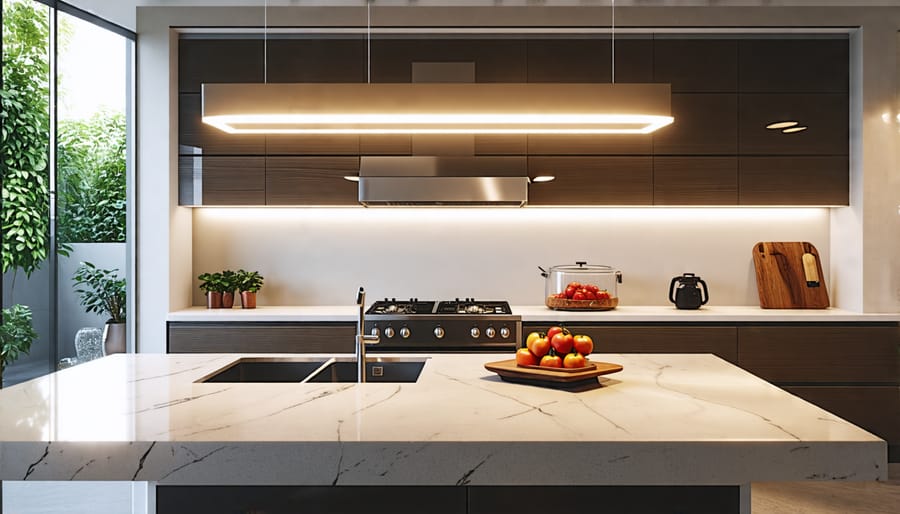
Evaluating Lighting Products
When evaluating lighting products, prioritize quality and energy efficiency. Assess the color rendering index (CRI) to ensure the lights enhance the true colors of your interior spaces, creating a welcoming atmosphere. Lumens measure brightness; choose appropriate levels for different areas. Energy efficiency can significantly reduce utility costs and environmental impact, so opt for LED models, which outperform traditional bulbs in both lifespan and energy consumption. Consider smart lighting solutions with adjustable settings to customize ambiance effortlessly. Consultation with lighting professionals can guide you in selecting fixtures that marry aesthetics with functionality, guaranteeing that your lighting aligns perfectly with your design vision.
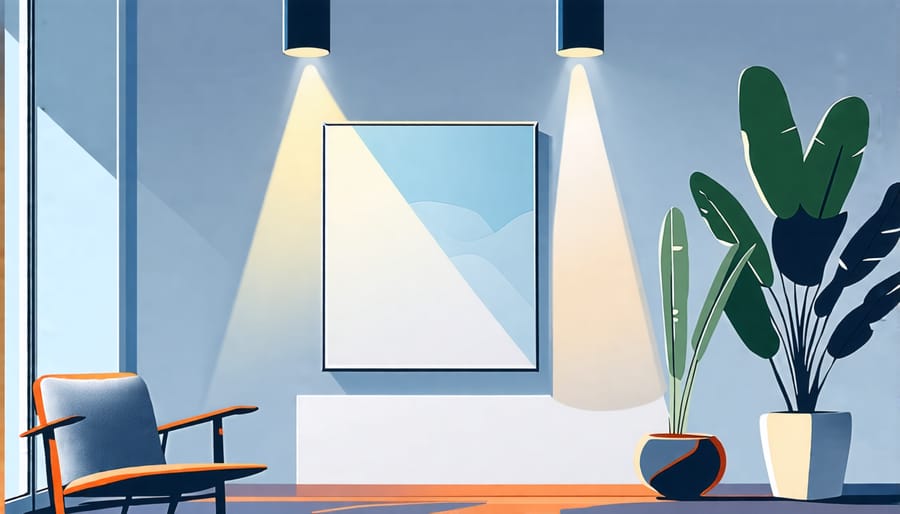
Lighting Trends in Interior Design
In the fast-paced world of interior design, lighting has transcended its functional role to become a pivotal element in setting ambiance and mood. Current trends emphasize a blend of aesthetics and technology, employing smart lighting solutions that adapt to the needs of different environments. One noticeable trend is the use of layered lighting, which combines ambient, task, and accent lighting to create depth and dimension within a space. This approach not only enhances the functionality of each area but also adds an artistic touch, highlighting architectural features and decorative pieces.
Sustainability is another key trend, with energy-efficient LED lights and automated systems gaining popularity among eco-conscious consumers. These innovations not only reduce energy consumption but also offer customizable color temperatures and brightness levels, allowing homeowners and designers to curate perfect atmospheres.
Minimalistic designs are also making waves, with sleek fixtures that offer a modern aesthetic while integrating seamlessly into various styles. Pendant lights and floor lamps with simple, clean lines are popular choices for achieving this look. Furthermore, bold statement lighting, such as oversized chandeliers or sculptural pieces, can serve as focal points, adding a touch of luxury and sophistication.
Personalized lighting consultations can assist in navigating these trends, ensuring that choices reflect individual preferences and the unique demands of each space. This tailored approach is crucial for achieving a harmonious balance between practicality and style in modern interior design.
Conclusion
Navigating the world of lighting and interior design can dramatically enhance both the aesthetic and functionality of a space. As highlighted in the lighting trend report, understanding the latest trends and innovations can significantly impact your design choices. Our exploration into various lighting types, from ambient to task and accent lighting, underscores the importance of selecting appropriate solutions tailored to specific needs and styles. By considering factors such as energy efficiency, color temperature, and fixture placement, you can optimize the ambiance and utility of your spaces.
Ultimately, while our insights provide a robust starting point, engaging with a professional lighting consultant is essential for achieving a seamless integration of lighting within any environment. Personalized consultations ensure that lighting solutions align with your specific requirements, bringing your design vision to life. Whether you’re a homeowner or a professional in the industry, expert guidance can transform ordinary spaces into extraordinary ones.

